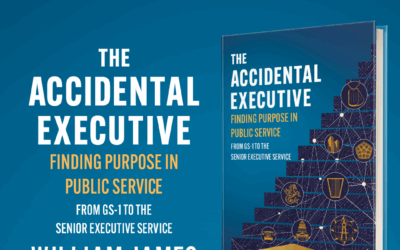As we return from the Fourth of July holiday, a different kind of firework display continues to erupt across the federal civil service. Many civil servants are grappling with what “work” really means today. The headlines tell a story of profound change and often, turbulence: return-to-office mandates disrupting routines, the persistent churn of budget and staff cuts, and a sense of “on-the-fly” policy changes that redefine daily operations. It’s clear that the landscape of government work isn’t just changing; it’s undergoing a significant transformation that touches the daily lives and long-term careers of countless dedicated civil servants.
All of this makes me reflect on where my own journey began. You know, that “accidental” path to executive leadership I write about in my memoir, The Accidental Executive: Finding Purpose in Public Service. It didn’t kick off in some fancy Pentagon office or a high-tech lab. It began in the quiet, unassuming farmlands of Lebanon, Illinois. And looking at today’s headlines, it’s interesting how much those simple lessons from a small town, and from my dad, still hit home. They’re still relevant for anyone navigating this fast-paced, sometimes daunting, world of government work.
“Turn It Upside Down”: Adaptability in a Shifting Landscape
My dad, Max James, had a simple rule when something didn’t work: “Turn it upside down and try again.” Whether we were fixing a car or water pipe, that mindset stuck with me. It wasn’t just about process or tools—it was about perspective.
Today, federal agencies are being asked to do just that: flip the script. Innovate, modernize, and make do, in environments with limited resources, legacy systems, and established ways of doing things. I know firsthand that civil servants don’t have the luxury to simply wish a new system into existence. Legacy systems are the backbone of how work gets done, even when they’re outdated, and the budgets and time to “rethink entirely” just aren’t always there. But real change, even within those constraints, comes from creatively adapting and optimizing existing systems, and focusing on incremental, impactful improvements. That childhood lesson—adapt, reframe, try again—is exactly what’s needed to make meaningful progress in this new era, often by finding new ways to work with what you have.
Outsmarting the “Gremlins”: Persistence in the Face of Bureaucracy
Dad also blamed setbacks on “gremlins”—those invisible forces that made things harder than they needed to be. But he never let them win. He taught me to keep going, and to find another way.
In federal service, those gremlins are very real: outdated systems, complex hiring processes, layers of red tape, and the turbulence caused by rapid policy shifts. But persistence matters. Whether you’re a new hire or a senior executive, success often comes down to grit—staying with the problem until you find a way through.
From Small Town to Public Service: Reclaiming Purpose
I didn’t enter civil service with a master plan. I just wanted to contribute. That quiet call to serve is what drives so many of us. But let’s be honest—today’s environment can test that commitment. Workforce reductions, political pressures, stalled pay raises, and the constant evolution of work itself can make you question your “why.”
But purpose endures. It’s what carried me from GS-1 to the Senior Executive Service. It’s what kept me going through uncertainty. And it’s what I hope this story reminds others: that even in chaos, our mission—to serve the American people—remains steady.
Looking Back to Move Forward
The lessons I learned in Lebanon—adaptability, persistence, and purpose—are the same ones that shaped my federal career. They’re not just personal values; they’re essential tools for navigating today’s civil service landscape, especially with the rapid changes underway.
So if you’re feeling the weight of change, I encourage you to look back. Your roots might just hold the compass you need to move forward.


